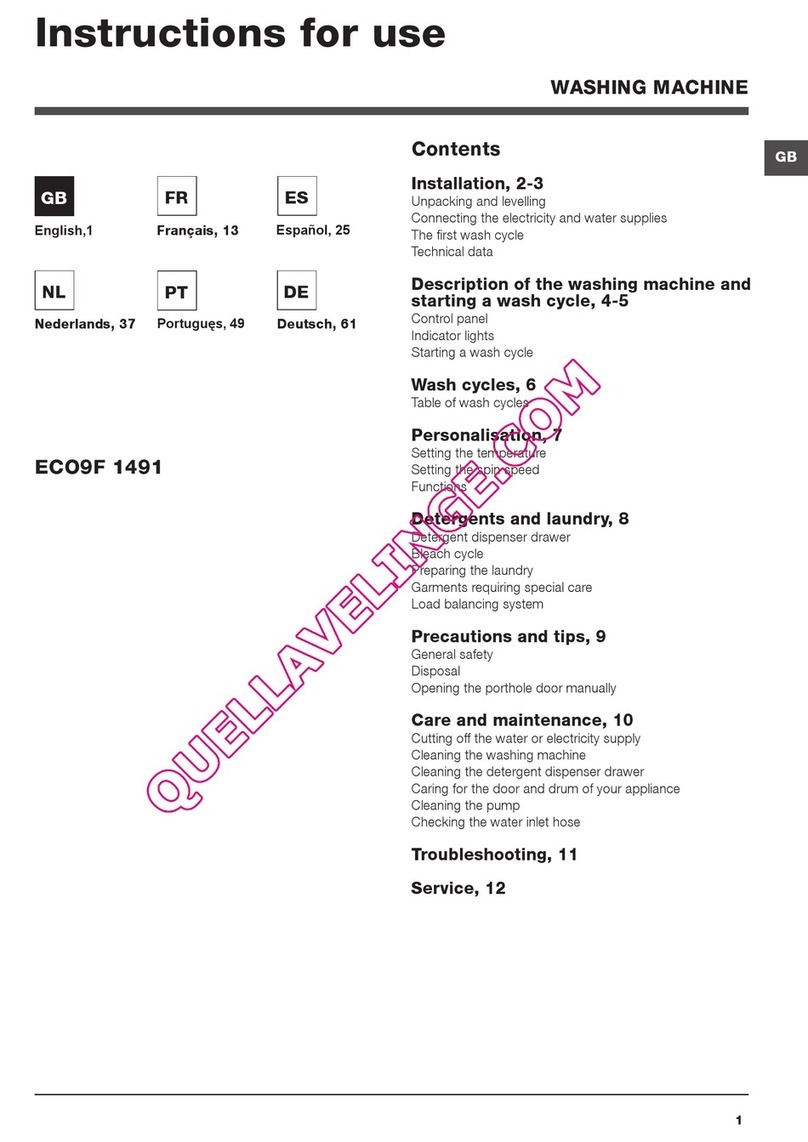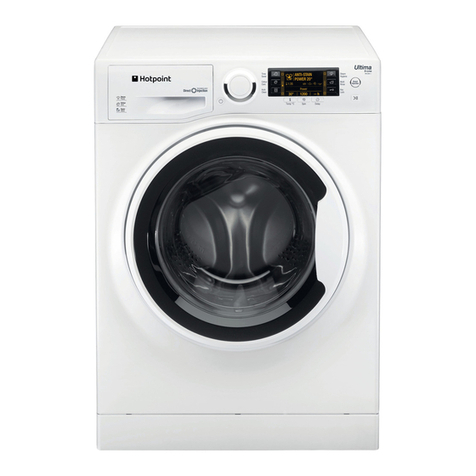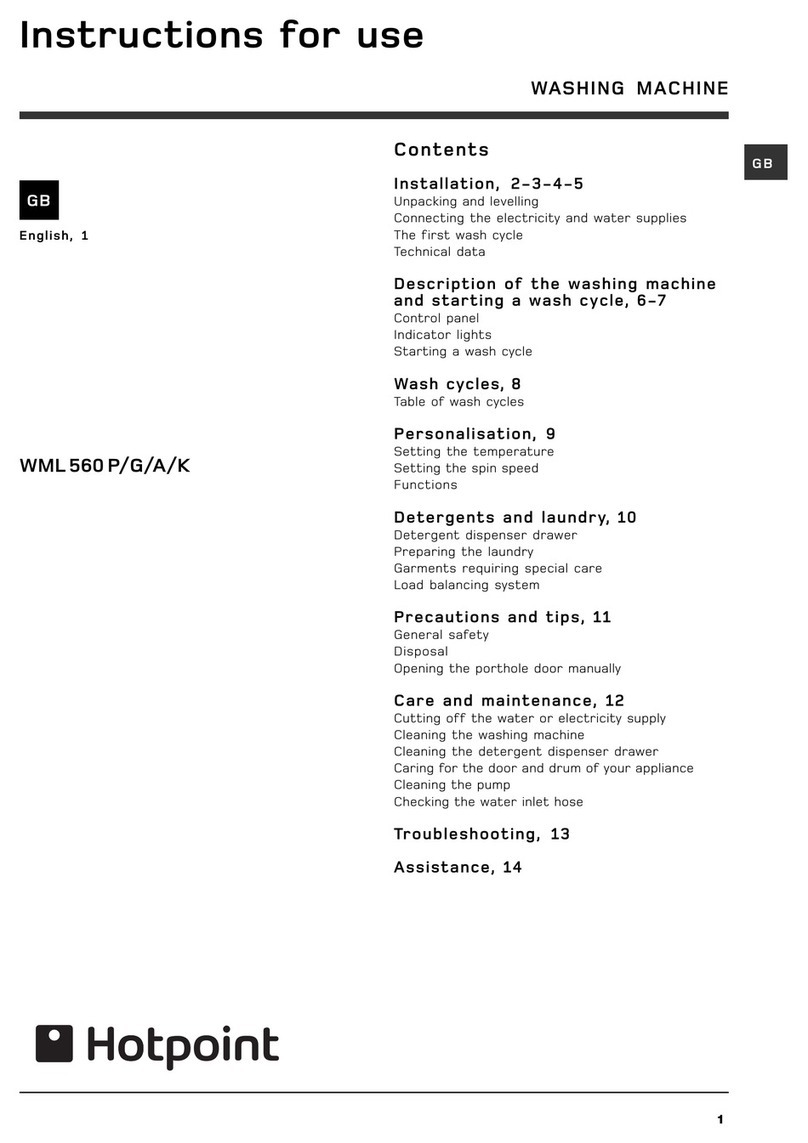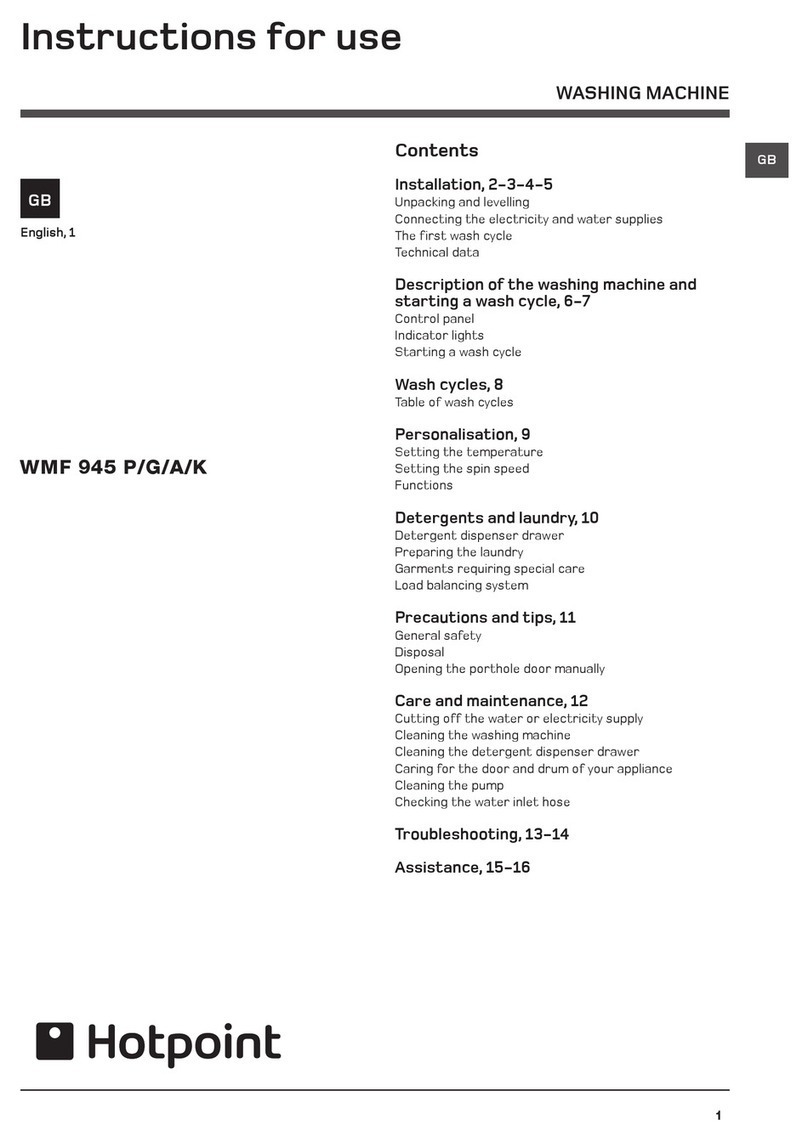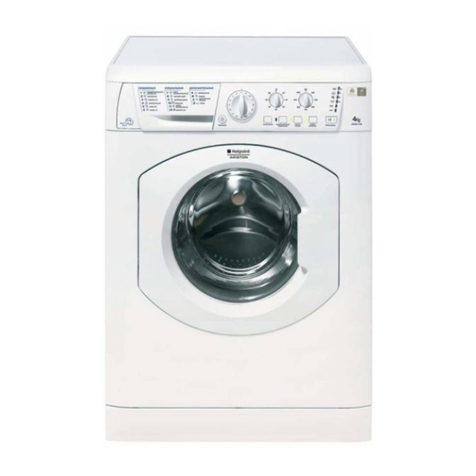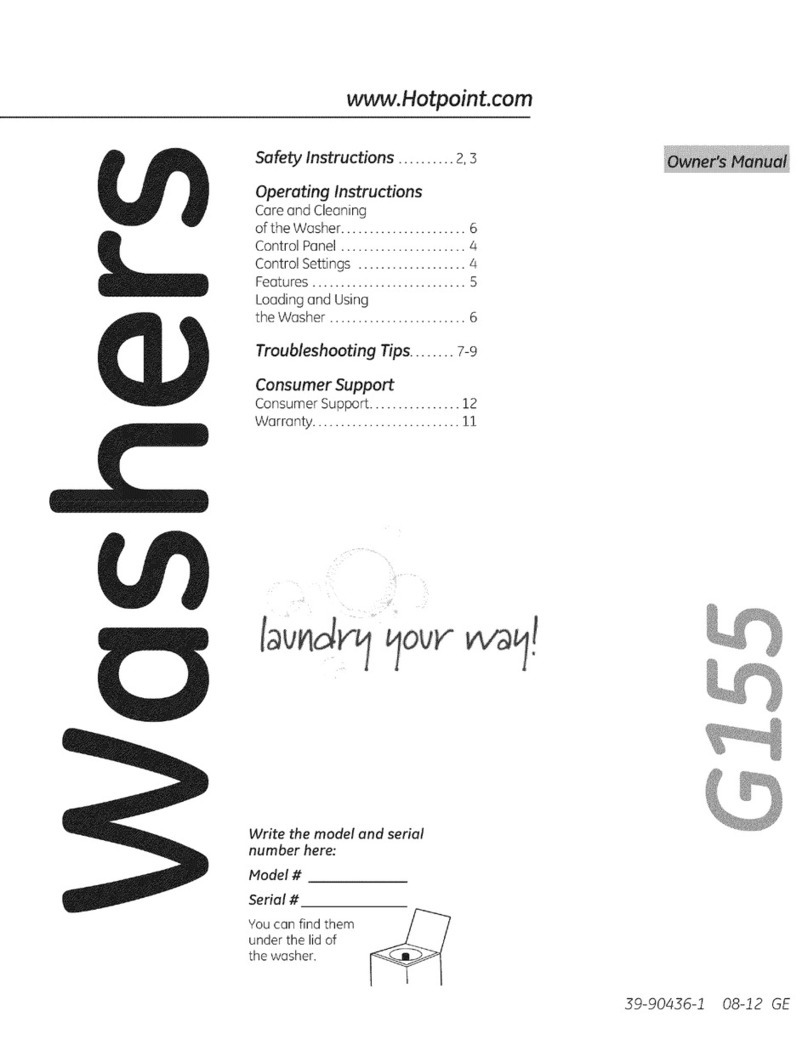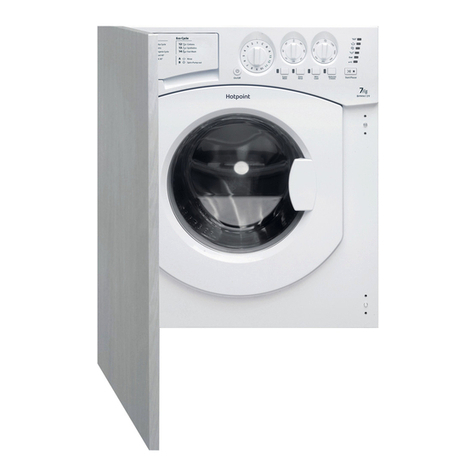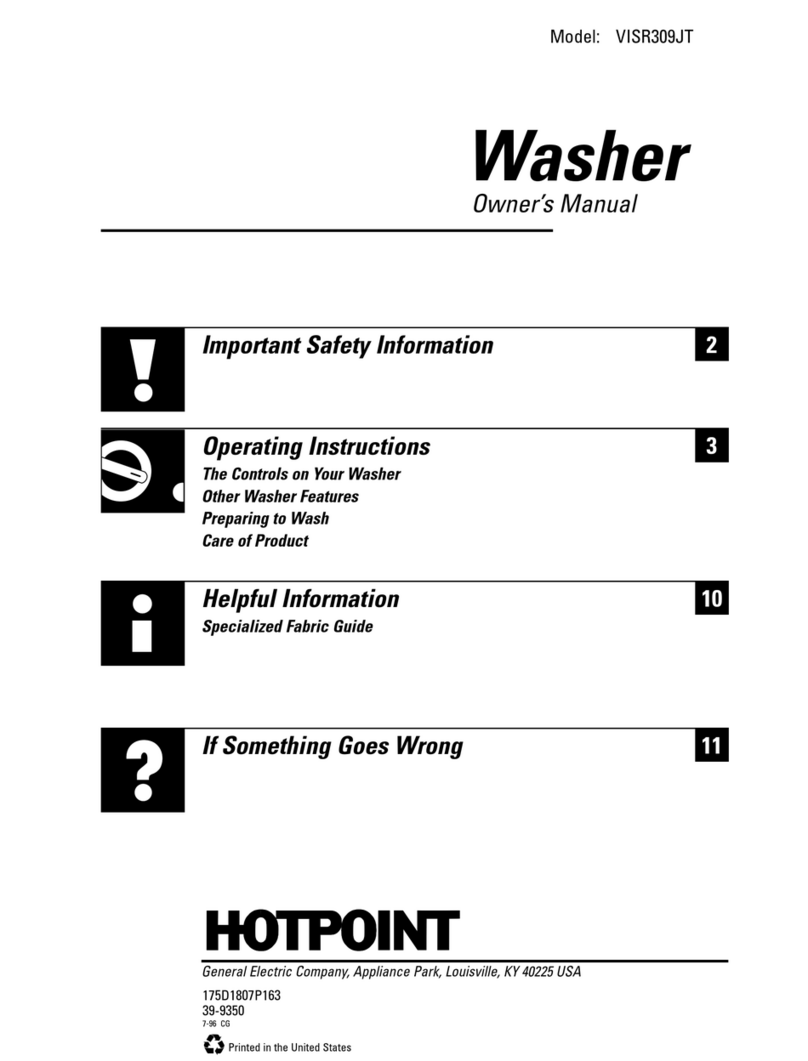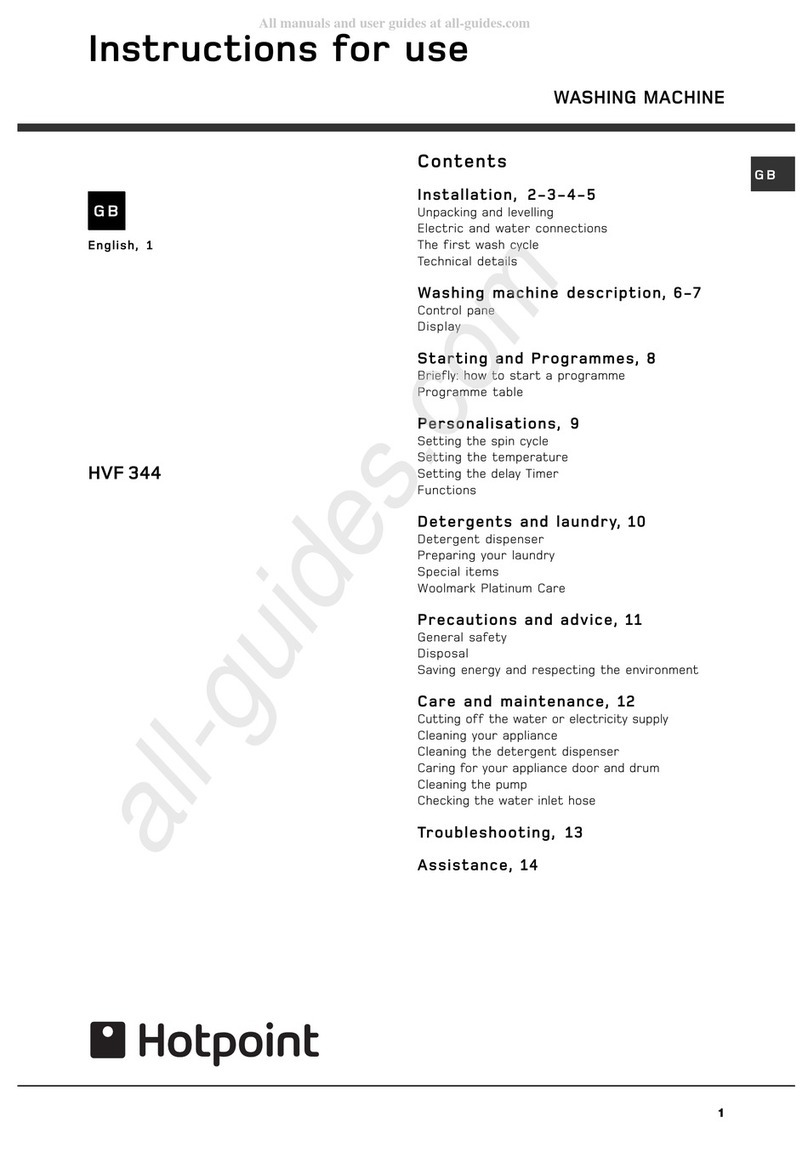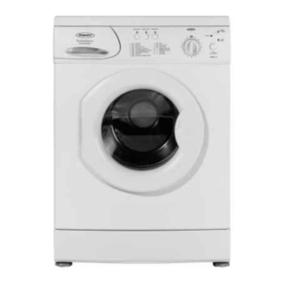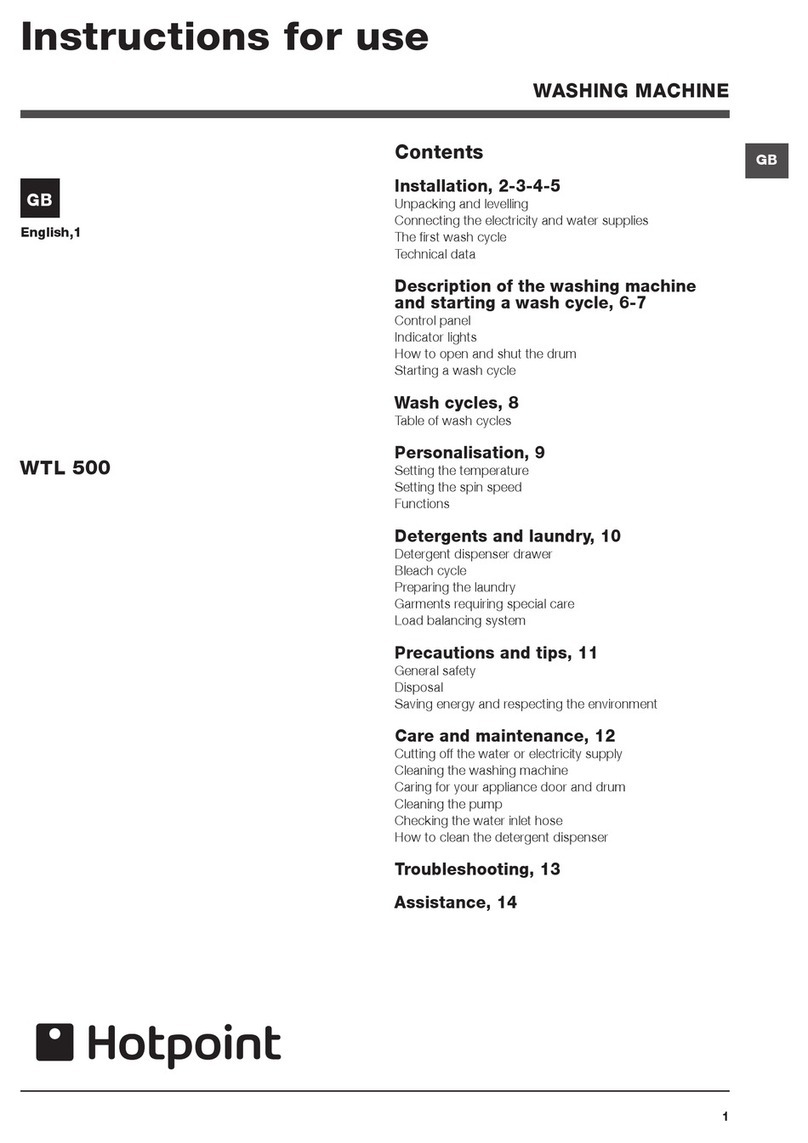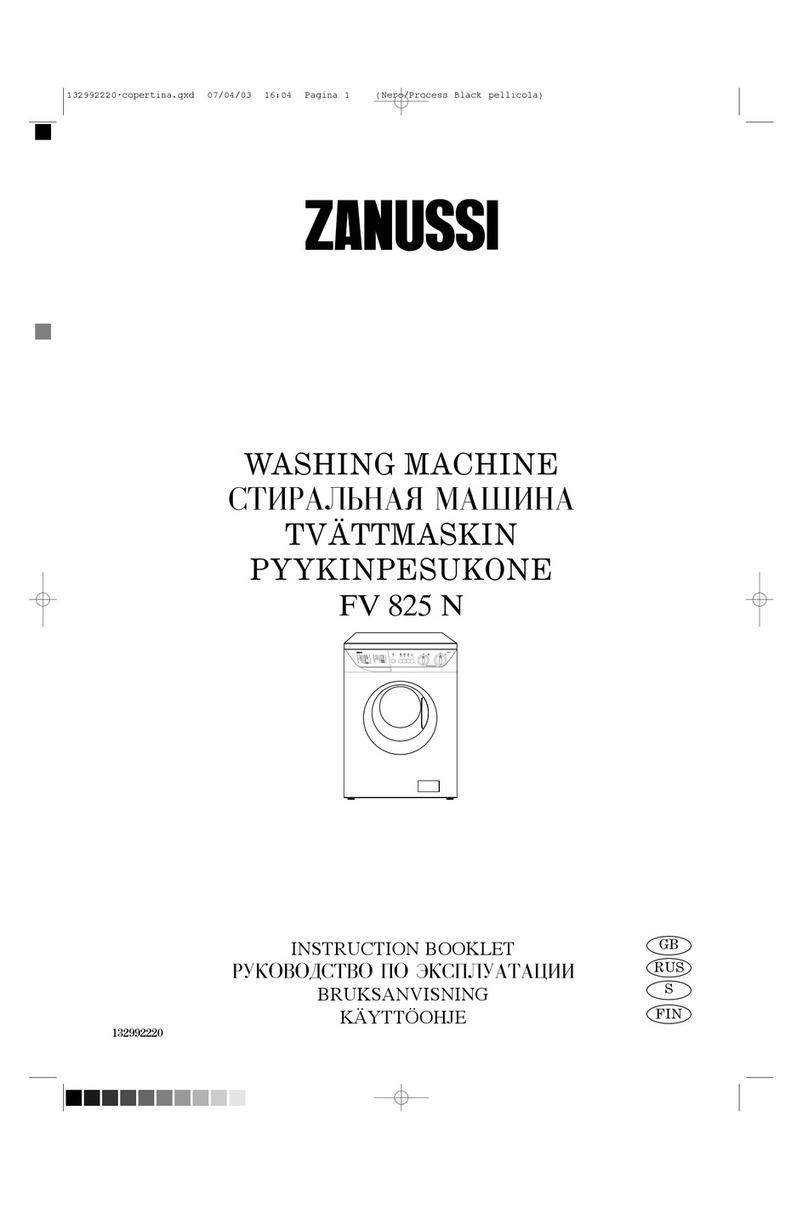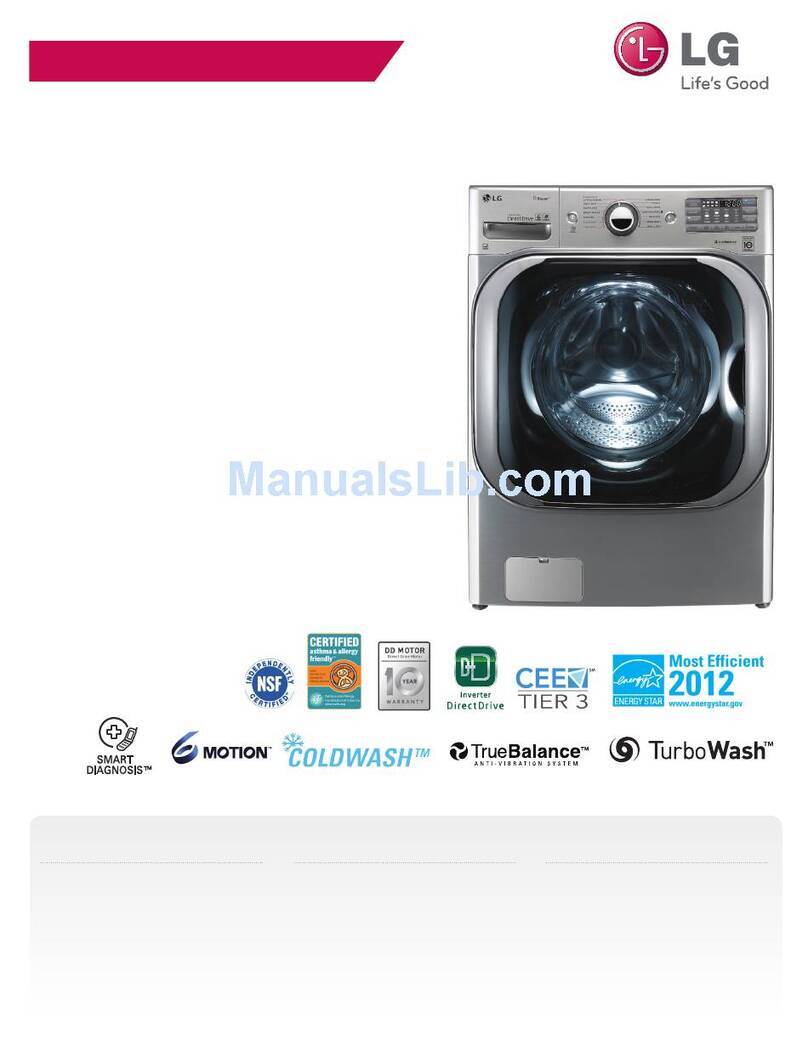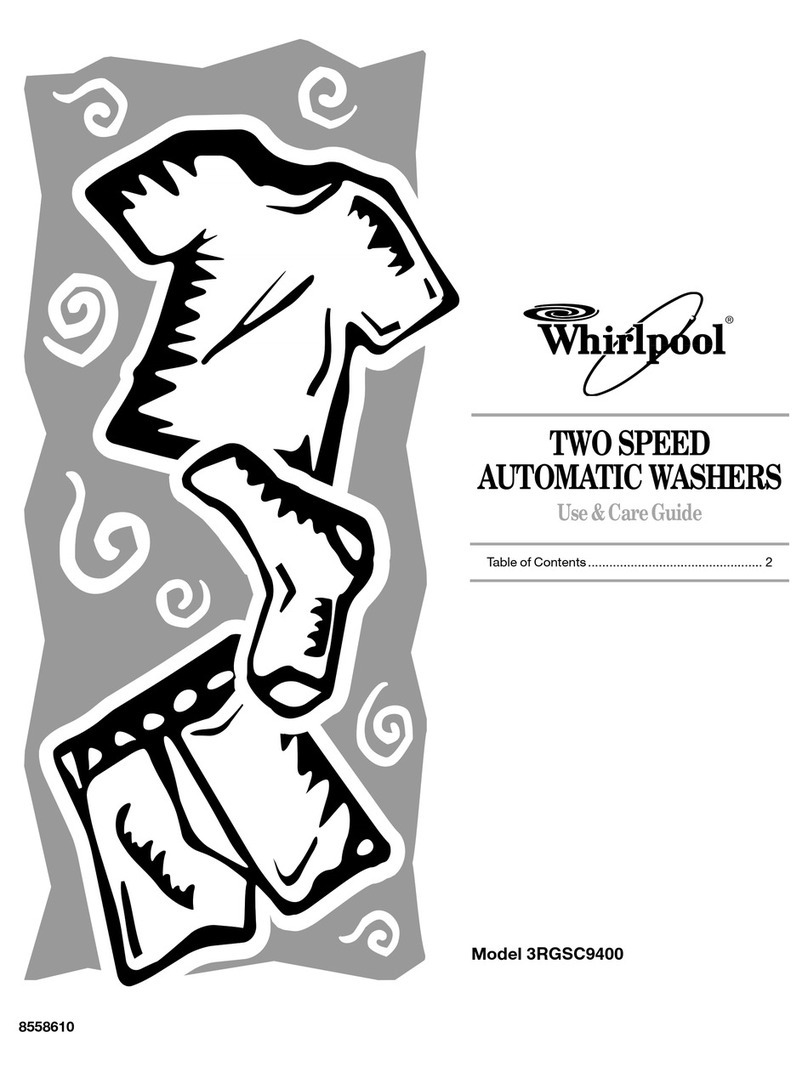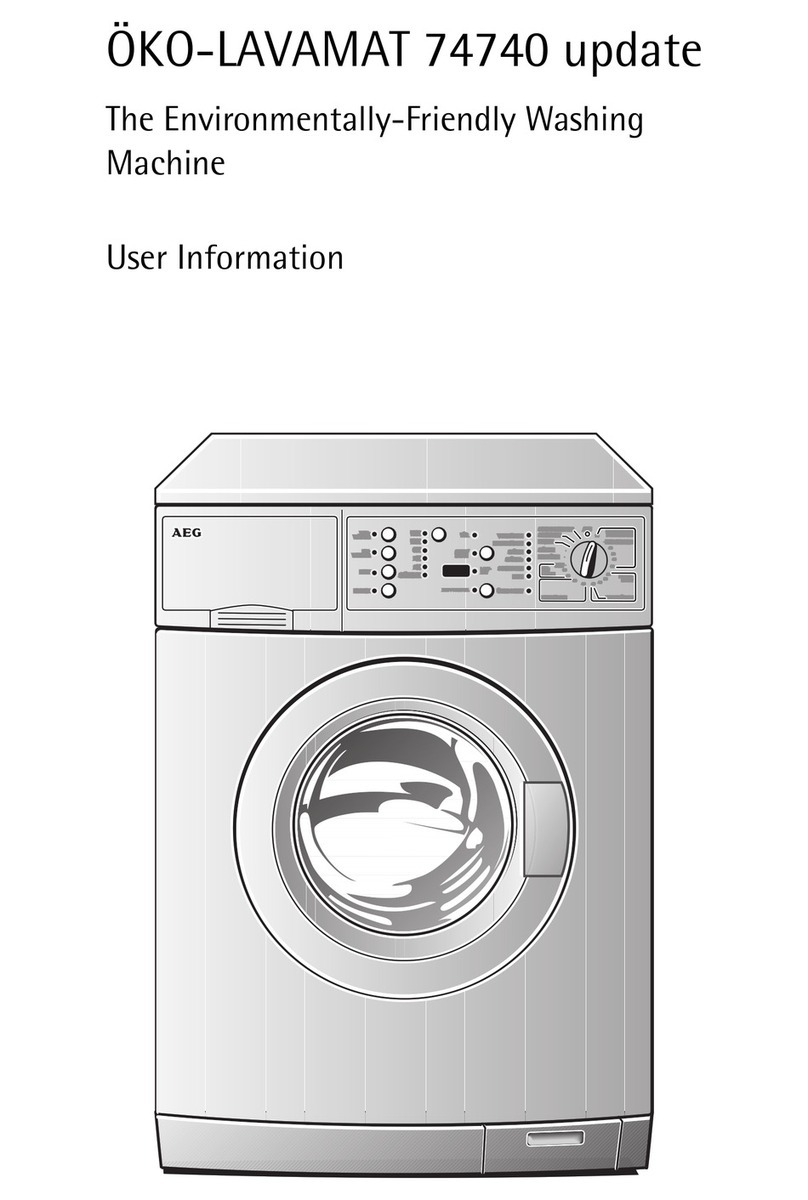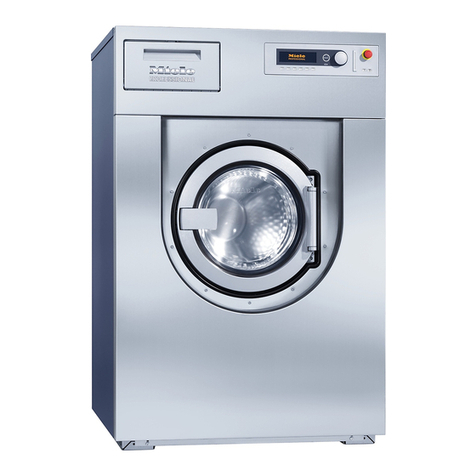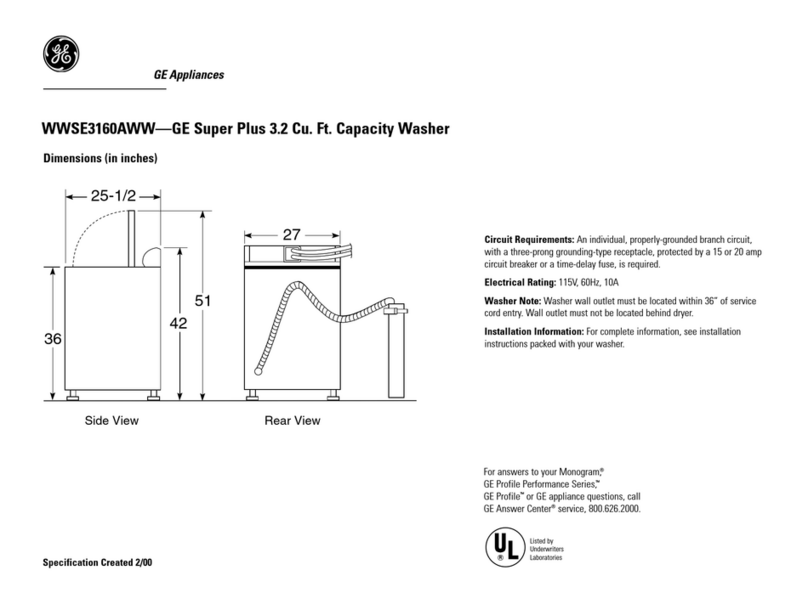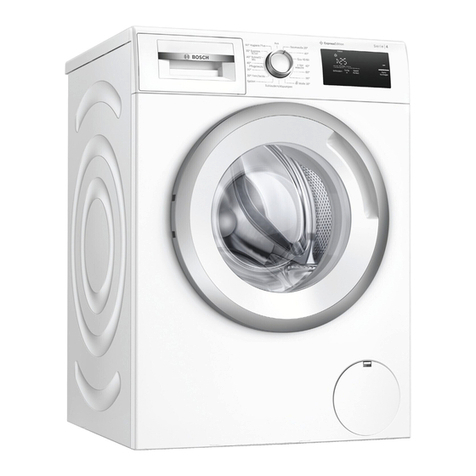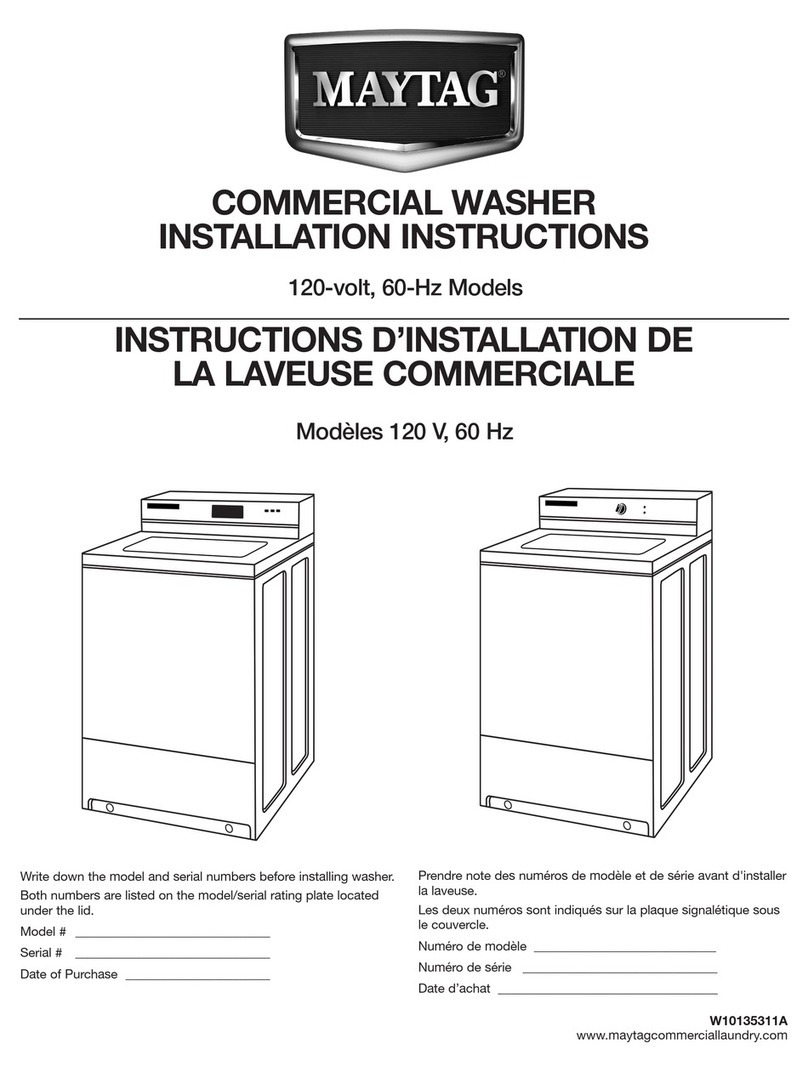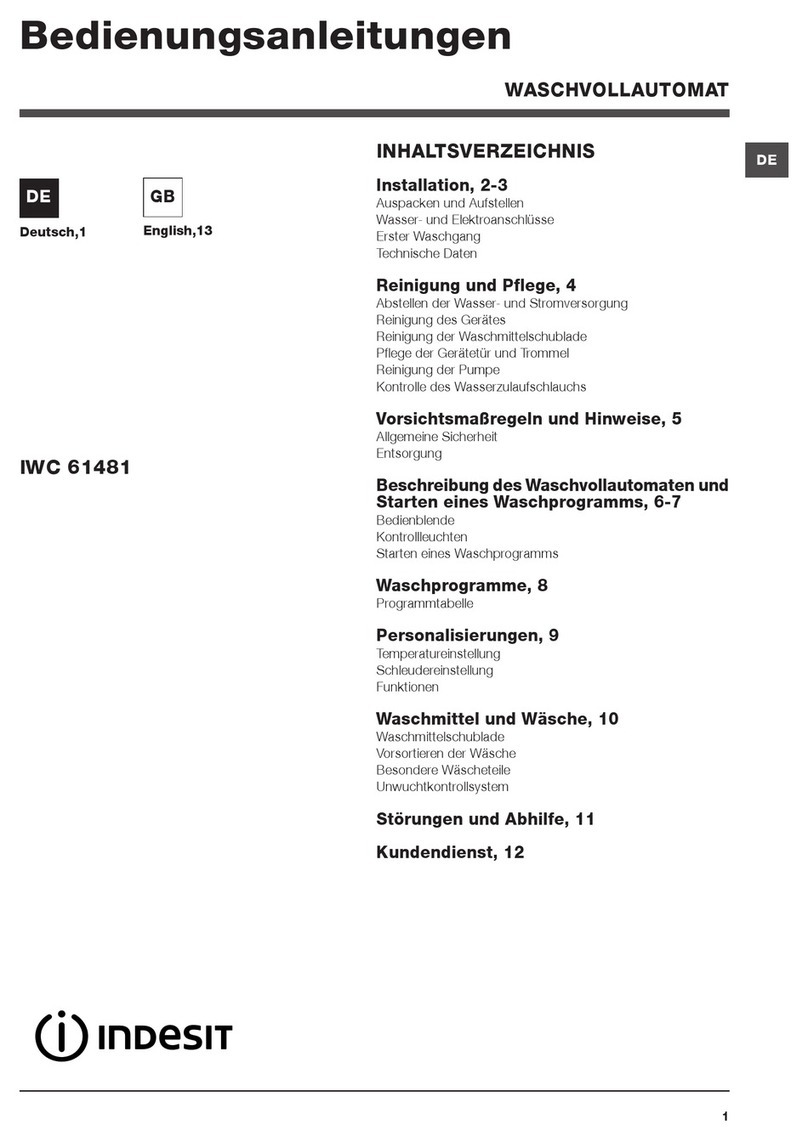GB
Detergents and laundr
Detergent dispenser drawer
ood washing results also depend on the correct
dose of detergent: adding too much detergent will
not necessarily result in a more efficient wash, and
may in fact a build up on the inside of your appliance
and contribute to environmental pollution.
! Do not use hand washing detergents because
these create too much foam.
Open the detergent
dispenser drawer and
pour in the detergent or
washing additive, as
follows.
! Do not pour detergent into the middle compartment (*).
Detergent should only be poured into the compartment 1.
compartment 1: Detergent for the wash
c cle (powder or liquid)
For best results liquid detergent should be poured
in the dispenser immediately before the start of
the programme.
compartment 2: Additives (fabric softeners, etc.)
The fabric softener should not overflow the grid.
Preparing the laundr
Divide the laundry according to:
- the type of fabric/the symbol on the label
- the colours: separate coloured garments from
whites.
Empty all garment pockets and check the buttons.
Do not exceed the listed values, which refer to
the weight of the laundry when dry:
Durable fabrics: max. 7 kg
Synthetic fabrics: max. 3 kg
Delicate fabrics: max. 2 kg
Wool: max. 1,5 kg
How much does our laundr weigh?
1 sheet 400-500 g
1 pillow case 150-200 g
1 tablecloth 400-500 g
1 bathrobe 900-1200 g
1 towel 150-250 g
Garments requiring special care
Bab c cle: this wash cycle 6 can be used to
remove the soiling typically caused by babies, while
ensuring that all detergent is removed from
nappies in order to prevent the delicate skin of
babies from suffering allergies. The cycle has been
designed to reduce the amount of bacteria by using
a greater quantity of water and optimising the
effect of special disinfecting additives added to the
detergent.
At the end of the wash cycle, the machine will slowly
rotate the drum to prevent the formation of
creases; to end the cycle press the START/PAUSE
button.
Shirts: use special wash cycle 7 to wash shirts in
various fabrics and colours.
It guarantees maximum care is taken of the
garments and minimises the formation of creases.
Lingerie c cle: for undergarments of any colour,
in any fabric. Use special wash cycle 8.
Wool: Hotpoint is the only washing machine
manufacturer to have been awarded the
prestigious Woolmark Platinum Care endorsement
(M.0508) by the Woolmark Company, which means
that all woollen garments may be washed in the
washing machine, even those which state hand
wash only on the label. Wash cycle 9 therefore
offers complete peace of mind when washing
woollen garments in the washing machine (max. load
1,5 kg) and guarantees optimal performance.
Silk: use special wash cycle 10 to wash all silk
garments. We recommend the use of special
detergent which has been designed to wash delica-
te clothes.
Curtains: fold curtains and place them in a pillow
case or mesh bag. Use wash cycle 10.
Load balancing s stem
Before every spin cycle, to avoid excessive vibrations
and to distribute the load in a uniform manner, the
drum rotates continuously at a speed which is slightly
greater than the washing rotation speed. If, after
several attempts, the load is not balanced correctly,
the machine spins at a reduced spin speed. If the load
is excessively unbalanced, the washing machine per-
forms the distribution process instead of spinning.
To encourage improved load distribution and balance,
we recommend small and large garments are mixed
in the load.
1
2
*
